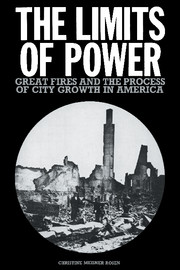Book contents
5 - Theory and narrative history
Published online by Cambridge University Press: 22 September 2009
Summary
Transitions can be difficult, the analytical transition from theory to historical case study no less so than the physical transition from the land use patterns of the pre-industrial walking city to the land use patterns of the industrial metropolis. They are often necessary, however. The conceptual framework developed in Part I draws heavily on the analytical constructs of the social sciences in order to explain the problems of urban redevelopment in a comprehensive, theoretical way. Part II does something very different. It examines the frictions that shaped and obstructed the urban redevelopment process historically, in order to show how they made themselves manifest and to demonstrate, as vividly as possible, how important and how deeply entrenched in urban life they were. The frictions were often hidden from the people who participated in the redevelopment process. They were always there, however, sometimes operating beneath the surface of events, sometimes perfectly apparent, embedded in the human interactions and environmental conditions that over time composed the histories of America's great cities. To make them less abstract, to show how they expressed themselves in daily life, this part of the book will examine them in the context of the massive redevelopment projects provoked by the great fires that demolished huge sections of Chicago, Boston, and Baltimore in the late nineteenth and early twentieth centuries.
- Type
- Chapter
- Information
- The Limits of PowerGreat Fires and the Process of City Growth in America, pp. 89 - 91Publisher: Cambridge University PressPrint publication year: 1986



